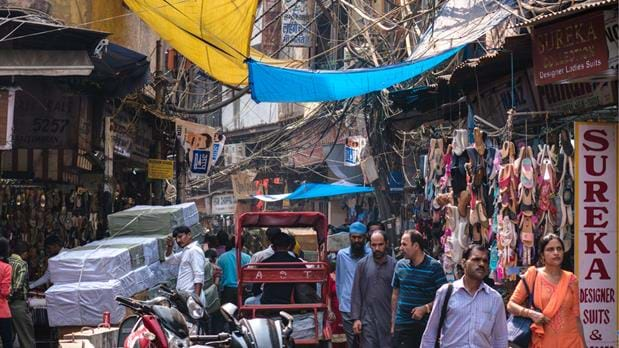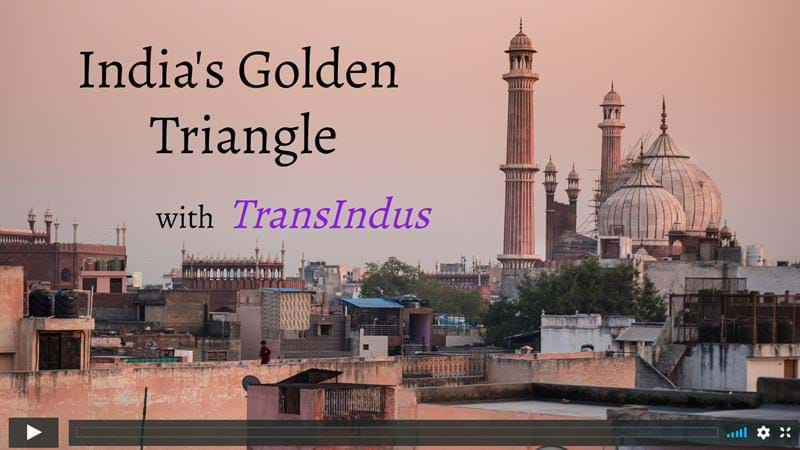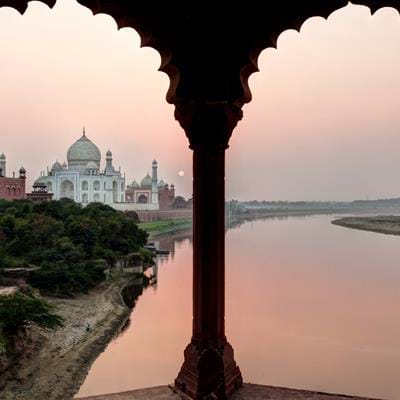India 14.02.2019 David Abram
The Taj Mahal is deservedly India’s principal visitor attraction, but hardly any of the millions who pour through its gates each day explore the city nearby. Rough Guide to India author, David Abram, makes the case for spending an extra day or two in Agra.
I’m writing this on the verandah of my hotel in Agra, home of the Taj Mahal, where I have just enjoyed one of the most memorable day’s sightseeing I’ve had in India. And no, believe or not, the ethereal white tomb did not feature. I saw that yesterday, both at dawn and at dusk, and it was as breathtaking as ever. Today, however, the sprawling city to the west formed the focus of my explorations.
Noisy, congested, polluted Agra gets a bad press from travellers, and on the face of it, you can hardly blame people for wanting to sidestep the city. Most see little more of it than their high-rise hotel, with perhaps a short foray upriver to admire the great Mughal fort where Shah Jehan, creator of the Taj, lived out his dotage as a prisoner of his son, Aurangzeb.
But if you zoom through Agra you’ll miss what is, in my opinion, one of the most atmospheric, vibrant and compelling destinations in the entire country: the old Mughal city near fort. Laid out in the 16th and 17th centuries, it is an enclave rich in forgotten monuments and traditional bazaars, where modern India has seemingly made little impact. I absolutely love it and always make a point of tacking an extra day on to my trips to explore the area a little more deeply.
Here’s a roundup of my latest discoveries. I saw them all in the company of a fantastic new guide TransIndus uses in Agra, who specializes in taking visitors off the beaten track places, both in the city centre and the surrounding countryside.
If you feel inspired, ask your TransIndus consultant to build in an additional day to your tour.
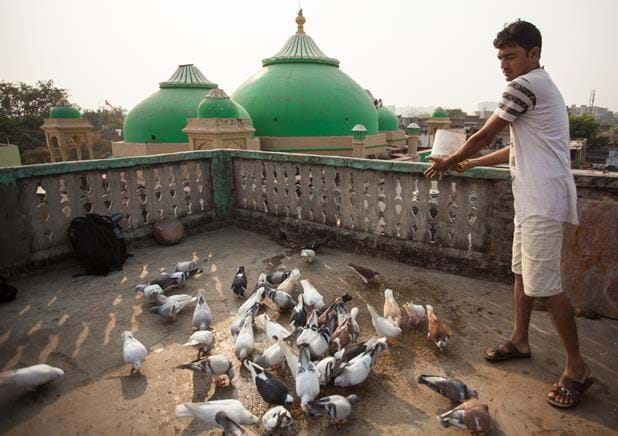
Meet the Kabooter Baz
Pigeons – ‘kabooters’ in Urdu – are nothing short of an obsession in India’s former Muslim cities. Unlike in Britain, where they are raced, here the birds are flown in flocks, with their owner – the ‘kabooter baz’ – controlling their movements in the sky with shouts, whistles and waves of rags tied to the end of long canes. My day began with a flying demonstration on a rooftop in Taj Ganj, the highpoint of which was the “capture” of a neighbour’s flock, driven to ground and later held for “ransom”. The tradition derives originally from Perisa and is very much alive and well in Agra, with fathers handing on the hobby to their sons.
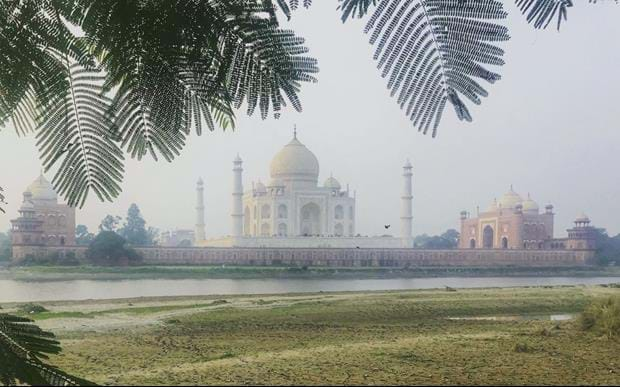
India’s Ultimate River View
You have to get up close to the Taj to admire its intricate decoration, but at some stage, you should also head across the Yamuna, from where the view of the tomb rising from the water’s edge is wonderful. The outlines of a formal garden – the Mehtab Bagh – survive where Shah Jehan wanted to construct a second mausoleum – a mirror image of his wife’s tomb, but in black marble. Tamarind trees provide the perfect frame for photographers!

Flower Power
Agra’s wholesale flower market has to be among the largest in the country. I’ve certainly never seen so many marigolds and rose buds in one place. We were there early in the day in the run up to Diwali and the atmosphere was jovial. The vendors loved posing for photos next to their giant sacks of blooms!
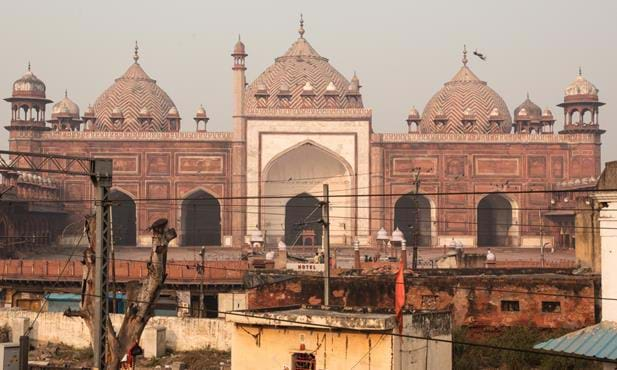
The Forgotten Mosque
Agra’s beautiful Jama Masjid mosque stands amid a chaos of railway lines, overbridges and ramshackle markets in the heart of the old city. Foreign visitors are a rarity, yet the building ranks among the most elegant and exotic in the country. It was commissioned by the rich and talented daughter of Mughal Emperor Shah Jehan, Jahanara Begum (1614-1681). After the death of her mother (Mumtaz, now interred in the Taj), Jahanara took on the role of 'Sahibat al-Saman' or 'Mistress of the Age', amassing a fortune from trade and land holdings, which she lavished on several extraordinary religious complexes - this one among them. Originally, the Jama Masjid presided over a grand piazza called which British railway engineers destroyed in the 1870s.
Off to Market
Agra’s bazaars are among the most densely packed and fascinating in India. Many of the tiny shops, temples and warehouses crammed into its labyrinthine core have been there for centuries. We visited on stall specializing in necklaces made of bank notes (used as wedding gifts), and a whole street given over the making of Diwali sweets. Our guide also knew where to find workshops where Hindu gods were carved from marble, and an auction devoted solely to the sale of betel leaves! The hours we spent wandering around these jam-packed lanes were the highlight of our entire trip.
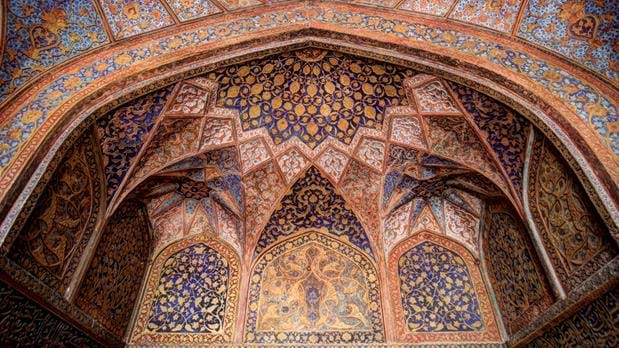
Fit for a King
On the northern outskirts of the city, Sikandra is where the Mughal Emperor Akbar erected his tomb. Enclosed inside 119 hectares of leafy, green, walled parkland is a four-tiered pyramid built of red sandstone and white marble inlay. The standout features here, though, are the main gateway, with its four white marble minarets, and the Perisan-style decoration adorning the ceilings of the main tomb’s entrance halls. Outside, langur monkeys and black-buck antelope roam wild in the gardens – like scenes from a Mughal miniature painting . . . heavenly!
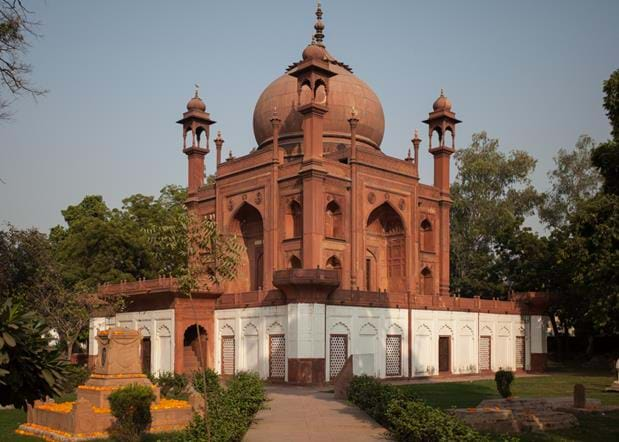
The ‘Red Taj’
The old European cemetery is one of Agra’s great hidden gems. It contains hundreds of graves, including that of the first British man known to have been buried in India, and a handful of more elaborate tombs, the grandest of which is the sandstone mausoleum of the Dutch military commander, William Hessing. Nicknamed the ‘Red Taj’, it is emblematic of the admiration with which Indian culture was regarded in the early colonial era. Hessing was head of the Maratha forces in Agra and on his death, his wife wanted to erect a monument commensurate with his power and status.
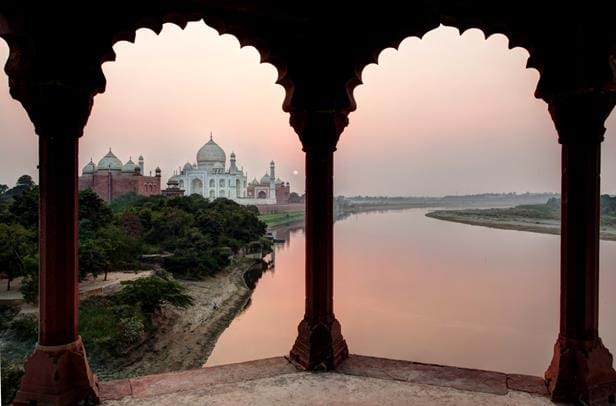
Underneath the Arches
There’s no better way to round of a memorable day’s exploration of Agra than what many regard as the finest view of the Taj Mahal. Overlooking the river’s south bank is a domed ‘baradari’, or pavilion, that once formed part of a lavish mansion belonging to the Mughal ‘wazir’, or prime minister. Both it, and the main building behind, lie derelict and unloved now, but its cusp arches and pillars create the perfect frame at dusk, when the sun sets behind the world’s greatest monument to love . . . An achingly romantic vision.
Video Inspiration
Experience the bustle and beautiful buildings of Agra in our two-minute travel video on India’s ‘Golden Triangle’, shot during a recce by the TransIndus team last autumn.
